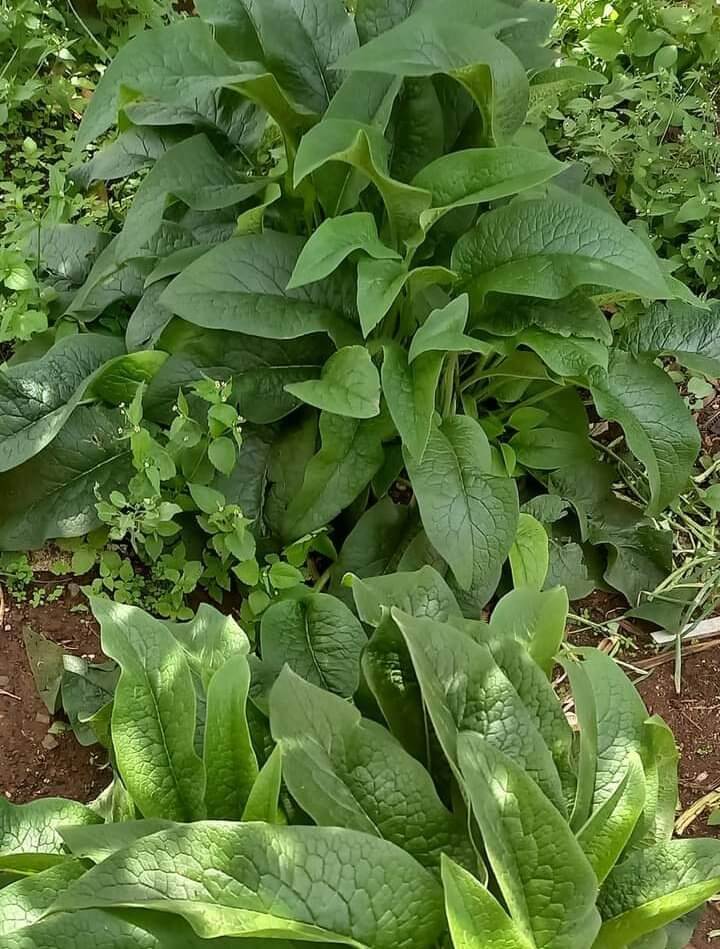According to data by the Agriculture And Food Authority (AFA)-Horticultural Crops Directorate, the production of Russian Confrey (mafaki/mabaki) has risen from 1,354 metric tonnes (MT) in 2020 to 4,051MT in 2022, translating to Sh57.81 million in earnings for farmers.
This demand has been fuelled by the traditional African vegetable’s myriad uses and its high nutritional value which has earned it ‘wonder plant’ status since the 19th century for its effectiveness as a high-value food, forage, manure, and pest repellant.
Food
Known for its soft texture and delicious taste, the hairy broad-leafed vegetable is often consumed as an accompaniment to ugali or incorporated in the making of mukimo.
It contains crucial micronutrients such as vitamins A, B12 (it’s the only land-grown plant growing that produces it), and C, as well as calcium, potassium, copper, iron, magnesium, sulphur, and zinc. It is also packed with Lysine– an amino acid that rids the body of cold sores.
Its mucilage content helps moisturize and increase skin cells which soothes and enhances the skin. It also contains allantoin– a compound that reduces body inflammations and pains.
Though there is conflicting clinical research, it should be noted that comfrey contains pyrrolizidine alkaloids (PAs), which if consumed in large quantities and over a long period might cause liver damage.
Fodder
Russian Comfrey was once christened as the world’s fastest protein builder due to its ability to quickly regenerate. The herb contains 26 per cent protein– higher than almost any other fodder crop.
25 per cent comfrey mixed with maize forage or small grains produced cheaper high-plane silage.
Dry matter yields of up to 40 t/ha/year have been archived in Kenya.
Organic Fertiliser
Thanks to its abundance of the major plant nutrients, NPK, i.e., nitrogen, phosphorus, and potassium, Russian comfrey shines as a source of home made organic fertiliser.
This is especially useful in solanaceous crops like tomatoes and potatoes as well as legumes, which are particularly potassium responsive.
It can be prepared as compost tea or drenched as foliar fertiliser. Comfrey can also be added in compost where it also acts as a composting accelerator.
Some trials have shown that the use of comfrey fertiliser increased potato yields more than manure, compost and some artificial fertilisers.
It also naturally regenerates the soil by extracting often unreachable primary nutrients and trace minerals from deep in the soil through its long roots that can burrow up to two meters deep.
Given its growth habit; a lush canopy that can go up to seven meters high; it offers a natural mulch and fertilises the soil with calcium, phosphorus, and potassium, especially around fruit trees or shrubs.
Pest Reppelant
Comfrey is very handy for farmers who are attacked by slugs as they act as a trap crop for the pest. Its leaves attract slugs which leave other essential plants alone.
It can also be used to prevent powdery mildew and pest predators like spiders by attracting them from other high-value crops.
Other Benefits
Its deep taproots also assist in breaking up soil hardpans, particularly in clay soils.
Comfrey can be used to prevent the spread of invasive perennial rhizome grasses such as couch and Bermuda that choke out other plants.
The plant’s deep root system enables it to not easily wilt over prolonged drought periods. While it is adaptable to many soils, it prefers moist fertile soils. It is mainly propagated through transplanting, transplanted root cuttings, or crown division.
Photo Courtesy
Read more:
Comfrey an emerging high-protein napier supplement
Cabbages give higher yield at lower cost when rotated with traditional vegetables
Nyamira women make Sh77K a week from spider plants
